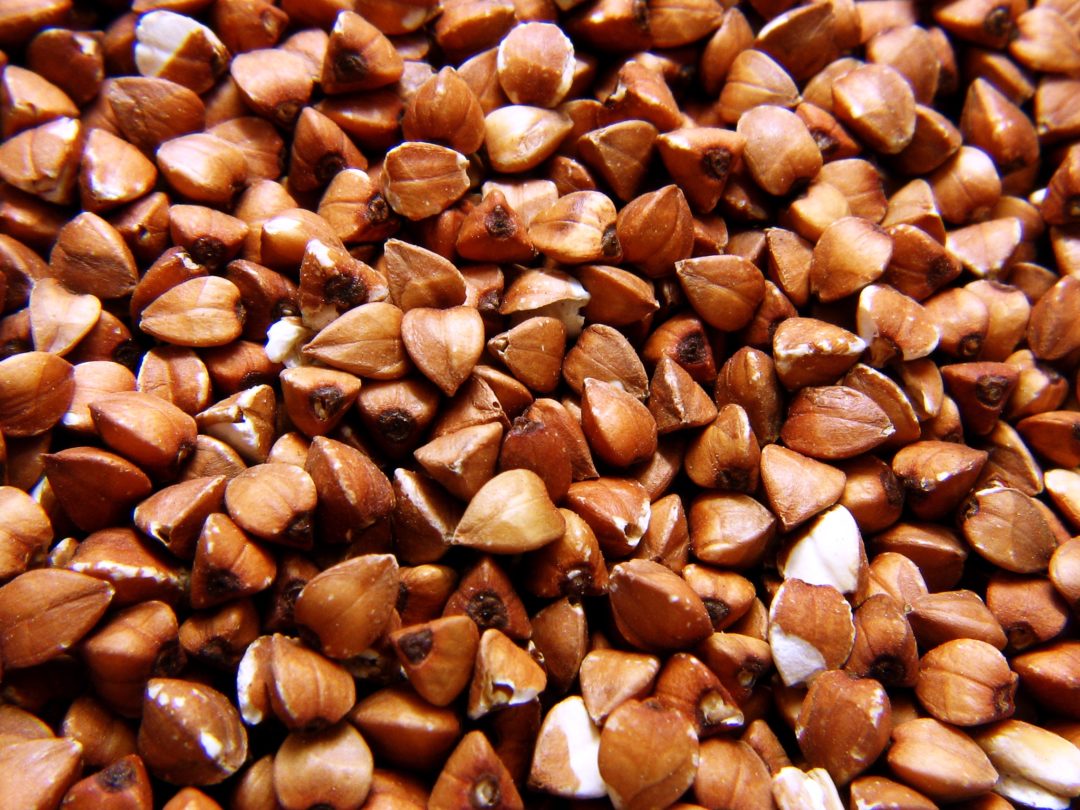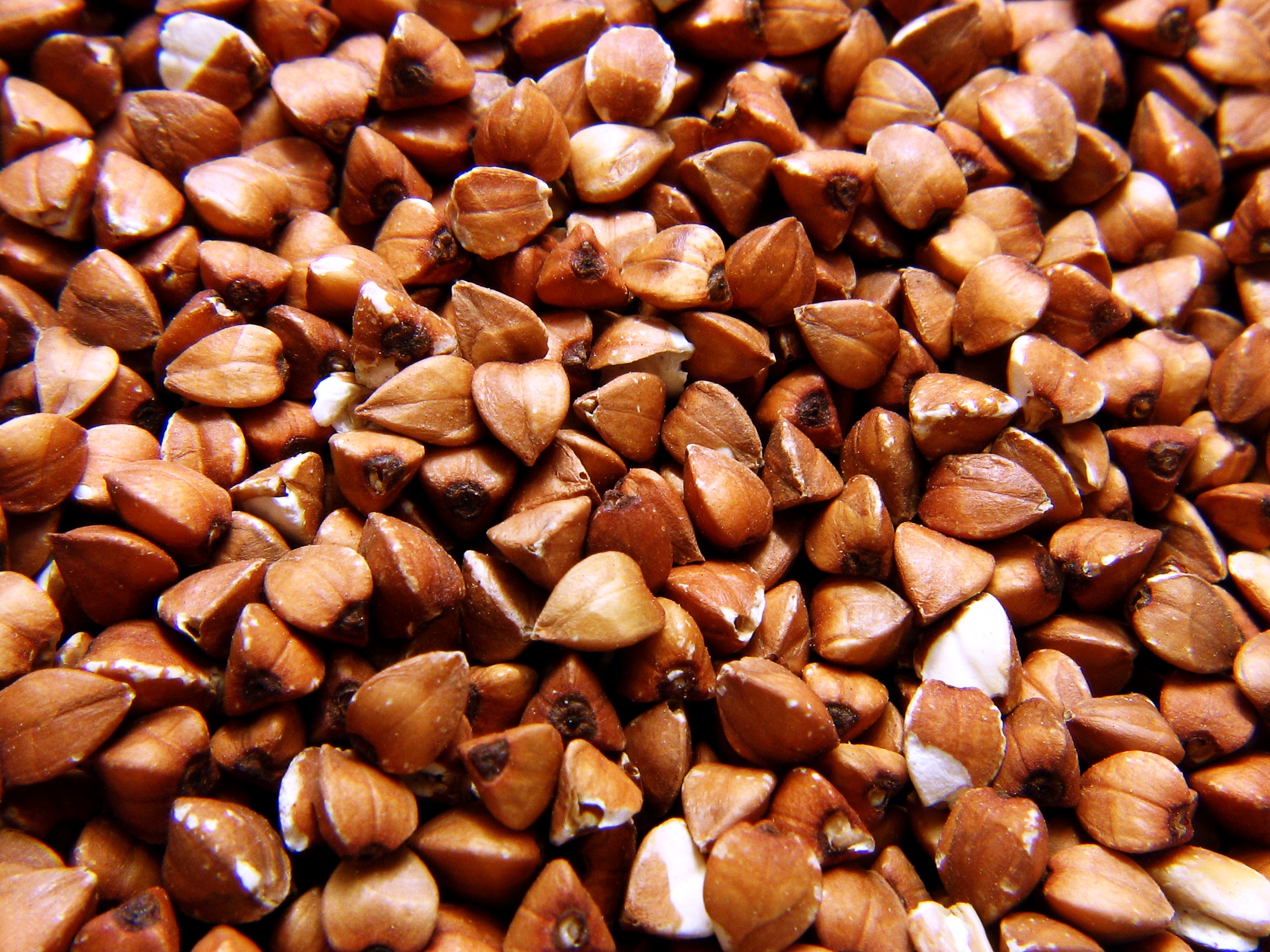If the first slaves carried the rice seeds in their hair to the US from Africa, buckwheat takes its roots from Asia and Central and Eastern Europe. (Wijngaard and Arendt, 2016) First planted in China, perhaps even in the Himalayas (Hyslop and d’Alpoim-Guedes, 2021), today, despite growing interest worldwide, buckwheat is primarily known in post-Soviet countries and overall Eastern Europe. It is an everyday staple that bears great symbolism for many families who traditionally grew up in those geographies. Relatively cheap, simple, and resilient, buckwheat has supported adequate nourishment through many hardships throughout history.
Today the narrative has changed for many. In the developed world, vegan, well-being, and fitness enthusiasts are turning to discover this “superfood” for its health and digestive benefits. Yet, for many, the simple product of water and buckwheat, “kasha,” remains a stronghold of family tradition, resilience, and plain yet healthy nourishment. Today, we ethnographically discover what it means to include buckwheat in the daily diet through food and consumption habits.
History of buckwheat and its consumption
“A pseudo-cereal” (Wijngaard and Arendt, 2016), “a weed destroyer,” “a soil renovator” (Leighty, 1919), and even “a fruit” (Gargan, 1984), buckwheat has gone through a vast history of consumption and meanings associated with it. Resilient as perhaps people who traditionally consume it, this “pseudo-cereal” grows where some other grains are doomed. Buckwheat flourishes on unproductive lands and challenging weather, with cool and moist predominance (Leighty, 1919; Sando, 1956; Gargan, 1984), which makes it perfect for colder climates.
Buckwheat is not wheat (Goodman, 1999), even if the name tells otherwise; however, it is used in various dishes depending on the cuisines and geography. For example, Griffin (2007), in his research, looked at the relevance of European climate conditions and the cuisines, particularly breakfast varieties, of those countries. He points out that breakfasts in colder climates tend to be more substantial, such as in Russia, “zavtrak [breakfast] may consist of hot oatmeal or kasha, eggs, cheese, cured meats or sausage, rye breads with butter and coffee or tea.” (Griffin, 2007, p. 1) “Kasha” in this case, is perhaps the simplest dish, made out of buckwheat boiled in water with salt, and practically means “cereal” (Gargan, 1984) However, in Eastern Europe, people do specify which “kasha” it is, buckwheat, rice, etc. In other cuisines, buckwheat is also used as sausage filler (Poland), ground into flour, and is used for pancakes and blini, or blintzes and latkes in Ashkenazic Jewish foods. (Goodman, 1999) Despite how buckwheat is prepared in these cuisines, it remains the base of many dishes and is not a simple addition or a substitute.
Russian proverbs or why “kasha” is a mother in Russia
Grains have a distinctive meaning across Eastern Europe, particularly Russia, where I come from. My own experience and autoethnography resemble the autoethnographic research of Dana E. Modell (2021). She defines “kasha” as the food of “hard times.” As someone who grew up during a Russian countrywide crisis of the 90s, I remember grains, particularly buckwheat, as one of our menu’s daily staples for its low cost yet rich nutritional value.
Pickiness with food was not an option in my childhood. Even though low budget drove many families to be extra cautious while grocery shopping, households sought to maintain a healthy nutrient intake. In fact, many people turned to their gardens (another traditional Russian aspect) for homegrown vegetables while buying only necessary ingredients, such as buckwheat, rice, sugar, salt, tea, and coffee, in the marketplaces. Later in 2008, this process was described by Stillman and Thomas, who point out that “since spending on food changed while nutrient intake did not, diet composition must have changed in response to these economic shocks.” (p. 1386) Resilience, optimization through availability, and simplicity symbolize the hard times lived and experienced through food consumption.
Contemplating buckwheat and “kasha” in general, I remembered a few famous Russian proverbs vividly representing the overall idea of symbolism and the strong cultural meaning. If “kasha” since the olden days is considered “our mother” (kasha – mat’ nawa), buckwheat had been called the “queen of grains” (tsaritsa krup). Here I would like to review two of the most famous Russian sayings.
“You won’t cook kasha with him” (S nim kashi ne svariw’) Several ideas about where this proverb has its root, but all of them are related to collaboration and working together towards one goal. It is believed that during negotiations or a ceasefire in Old Russia (na Rusi), enemies had to cook “kasha” together. As it is considered a serious matter, if “kasha” turned out bad, they said one could not be relied upon and trusted.
“A Russian man won’t be full without kasha” (Russkogo muzika bez kashi ne nakormish’) In the old times, when a man was looking for a wife, a few female candidates were supposed to cook “kasha” for this man, and whoever cooked the tastiest “kasha” would be asked to marry. Also, “kasha” has been one of the army’s main staples, providing strength to men due to its high nutritional value.
In both proverbs, “kasha” is rather a collective name, as it can be made from rice, millet, buckwheat, etc. Despite that, buckwheat keeps its strong place among one the main grains for its nutrition and availability. Mintz (1985, p. 7) does say that “of course, food choices are related in some ways to availability, but human beings never eat every edible and available food in their environment.” In this case, I believe buckwheat’s famous nutty and “earthy” flavor must invigorate a particular likeness or at least a taste of nostalgia since many Eastern Europeans worldwide keep consuming this resilient grain. However, it is hardly served to guests; most Eastern European households always have hoarded a small or not-so-bag of buckwheat in the cupboard.
Superfood of today
In the 80s, Mr. Orr, the vice president of The Birkett Mills, claimed that only around ten percent of people in New York know about “kasha.” He explicitly attributed it to “break[ing] out of the ethnic and geographical background.” (Gargan, 1984) However, in recent years, buckwheat’s popularity has multiplied due to its nutritional value or the trend for exotic superfoods that promise cleansing and rejuvenating effects, or perhaps both.
Its “earthy,” nut-like flavor attracted many to consider buckwheat as “an alternative crop for organic cultivation and as a health food.” (Wijngaard and Arendt, 2016) For many vegans and health enthusiasts worldwide, this high in minerals, antioxidants, and fiber, gluten-free “supergrain” is associated with “new” food to nourish the body cleanly and organically. The way, which Eastern Europeans and Russians have supported their families’ diets through years of prosperity and years of instability.
The narrative we tell ourselves about why we eat what we eat significantly depends on the geography of where we come from. Canadian buckwheat kasha burgers or kasha pancakes served with almond butter (Creighton, 2007) are an exotic and exciting modern trend. In contrast, Russian plain buckwheat kasha boiled in water with salt is, first of all, a tribute to traditions.
To further praise buckwheat and recognize its historical value, this essay is ended with a part of the poem to buckwheat cake, written already in 1831:
Worn in the bosom of the Indian maid,
Who taught to make the hoe-cake, (dainty fare,
When butter’d well!) I envy not their joys.
How easier of digestion, and beyond
Compare, more pure, more delicate, the cake
All other cakes above, queen of the whole,
And triumph of the culinary art –
The Buckwheat Cake!
(Pickering, 1831, p. 6)
Sources:
Creighton, Judy. “`Supergrain’ Kasha Catching on for Its Impressive Health Benefits,” Canadian Press NewsWire, January 15, 2007
Gargan, Edward A. “Penn Yan, N.y. – It’s Kasha Country,” New York Times, Late Edition (East Coast), September 14, 1984
Griffin, Pam. “Breakfasts in Europe Vary by Climate, Availability of Foods,” McClatchy – Tribune Business News, February 21, 2007
Goodman, Matthew. “The Food Maven: From Earthy to Sweet, the Bliss of Buckwheat.” Forward, Dec 10, 1999
Hyslop, Gwendolyn, D’Alpoim-Guedes, Jade. “Linguistic Evidence Supports a Long Antiquity of Cultivation of Barley and Buckwheat over That of Millet and Rice in Eastern Bhutan,” Vegetation History and Archaeobotany, no. 4, July 1, 2021
Leighty, Clyde. Buckwheat, Farmers’ Bulletin United States. Department of Agriculture No. 1062, Washington, D.C.: U.S. Dept. of Agriculture, 1919
Mintz, Sidney W. Sweetness and Power, New York: Penguin Books, 1985
Modell, Dana E., “Kasha: The Mighty Buckwheat Groat: Pp 113-123,” Digest: A Journal of Foodways and Culture 8, no. ½, November 30, 2021
Sando, W. J. Buckwheat Culture, Farmers’ Bulletin / United States Department of Agriculture; No. 2095 Washington, D.C.: U.S. Dept. of Agriculture, 1956
Stillman, Steven, Thomas, Duncan. “Nutritional Status During an Economic Crisis: Evidence from Russia,” The Economic Journal, no. 531: 1385–1417, August 1, 2008
Pickering, Henry. The Buckwheat Cake, a Poem .. Boston: Carter, Hendee & Babcock, 1831
Wijngaard, H. H. and Arendt, E. K., “Buckwheat,” Cereal Chemistry 83, no. 4: 391–401, 2006






